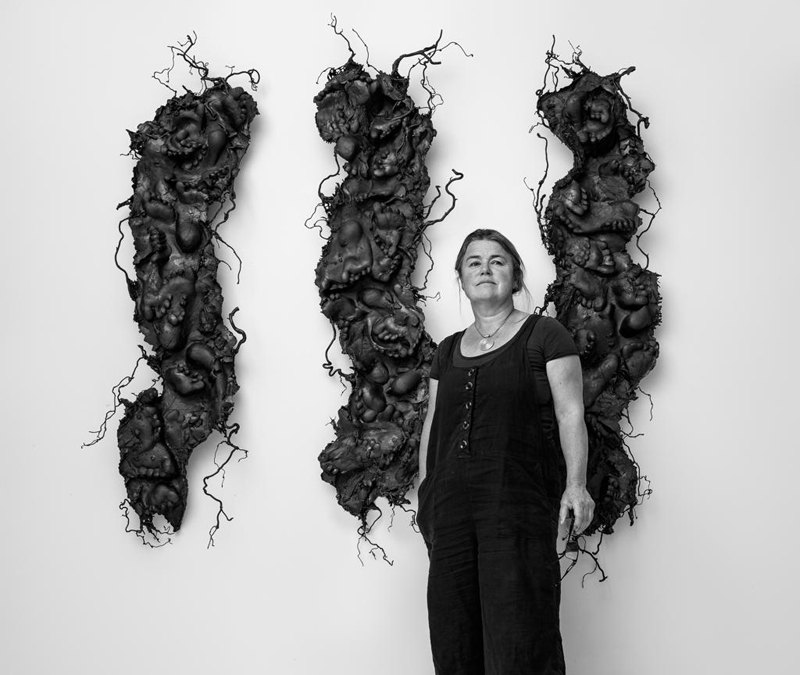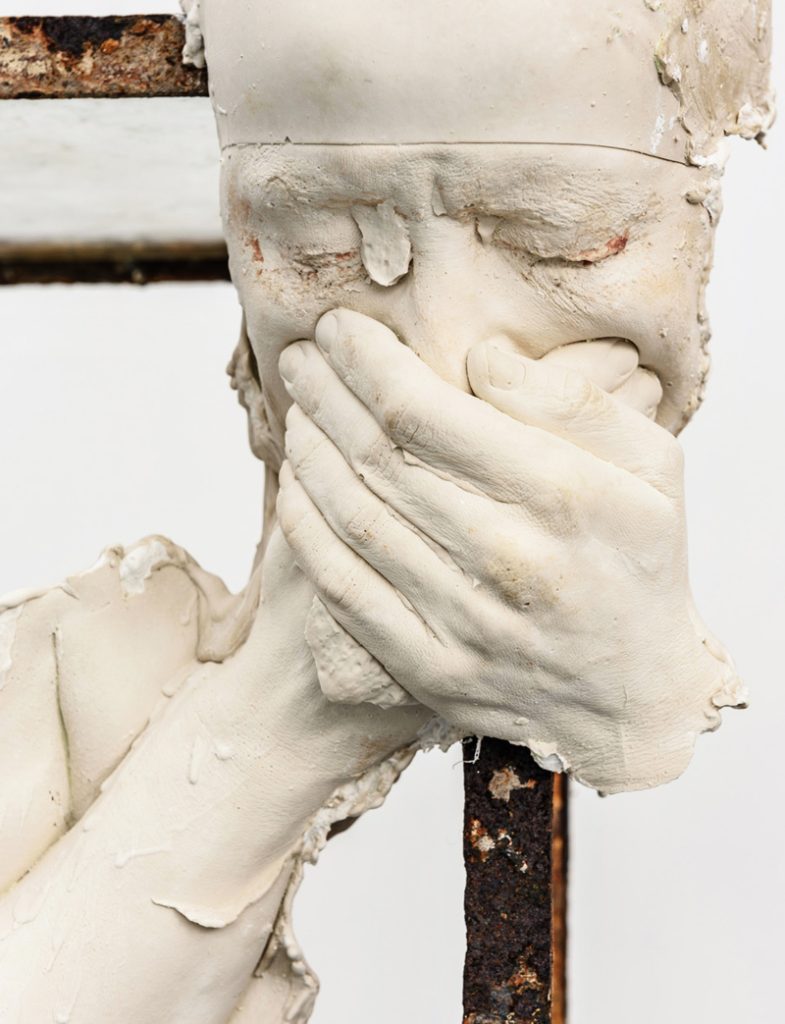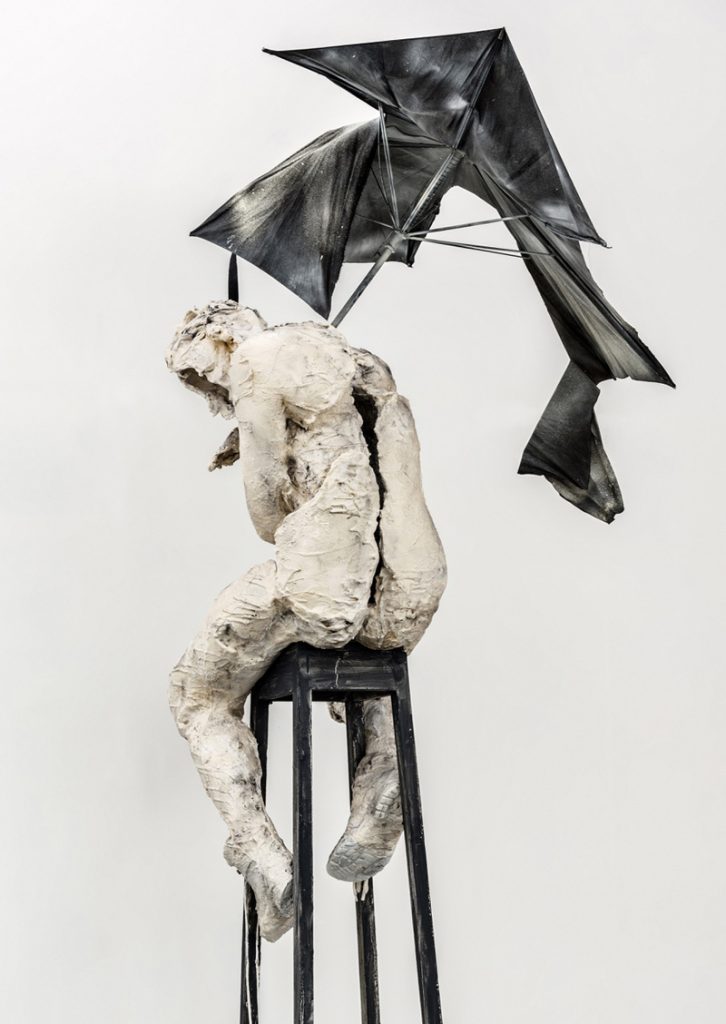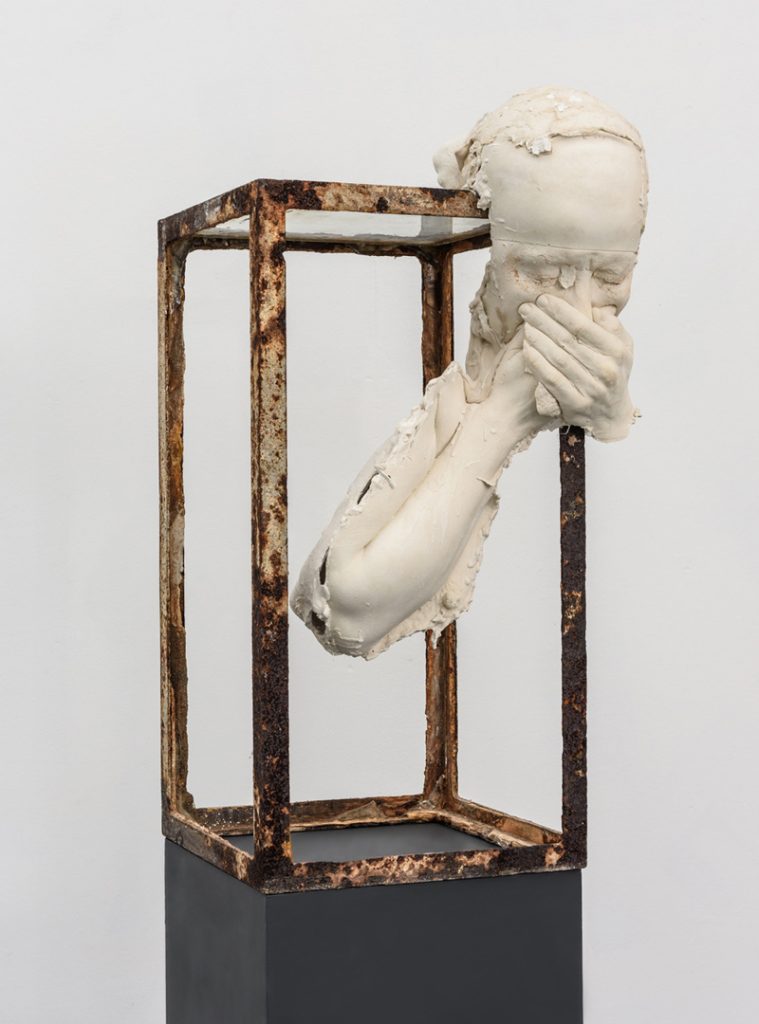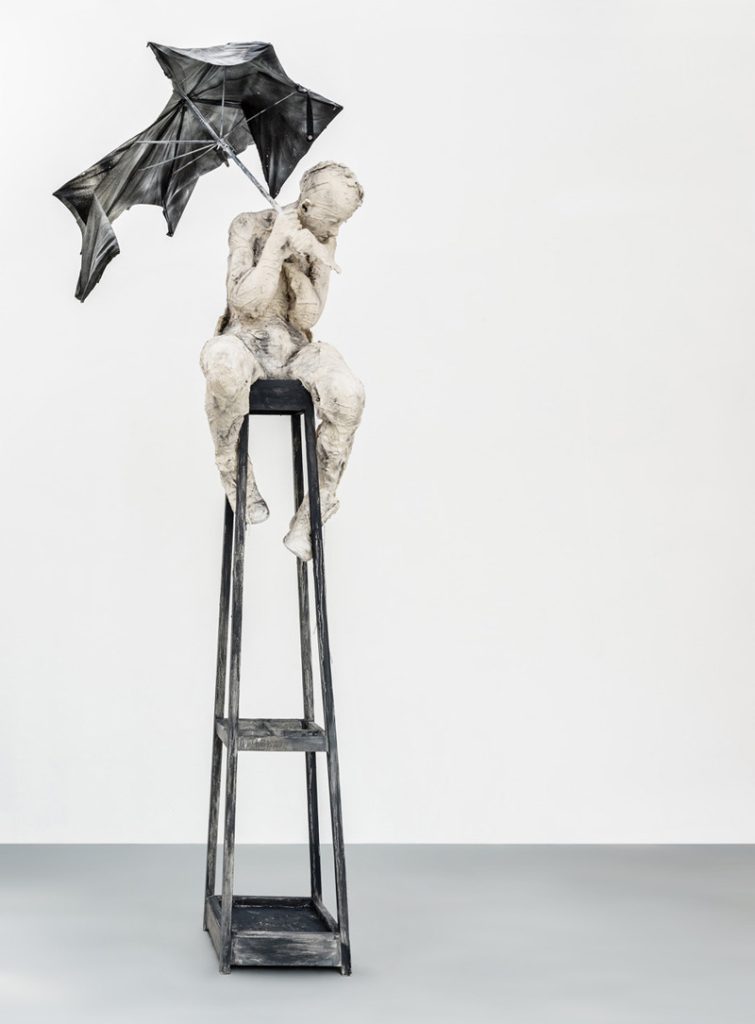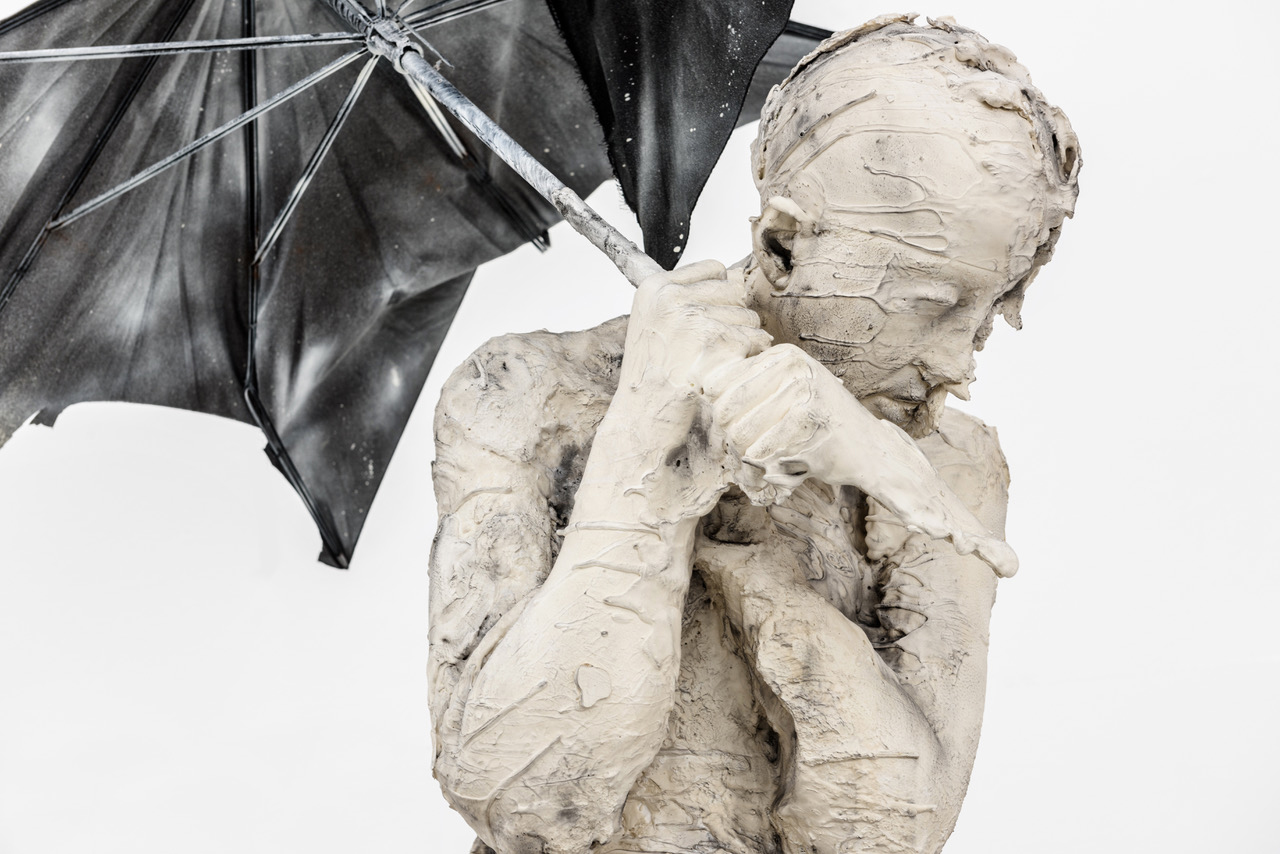
The coming storm
In the last two years a new body of work—perhaps best described as biomorphic—has arisen through my fascination with life-casting. In these new forms, I am continuing my decades-long, tentative approach towards a less literal representation of the body, attempting to capture inner experience as opposed to outer appearance whilst still holding fast to my original awe of the real physicality of the human body in all the various forms of beauty it takes.
ANNA GILLESPIE MRBS was born in Surrey in 1964. She studied Philosophy, Politics and Economics at Wadham College, Oxford and then International Relations at the London School of Economics. In 1988 Anna returned to sculpture, taking a City and Guilds in Stone Masonry and Carving in Bath before going to the Centro d’Arte, Verrocchio, Italy to work as a studio assistant to sculptor, Nigel Konstam. Anna then completed an MA in Fine and Media Arts in Cheltenham. Anna now lives and works in Bath.
Anna has work in the collections of Chippenham Museum, The Prudential, Burghley House Sculpture Park, The Somerset Museum, Museo Arte Contemporanea Sicilia, Bodrum Sculpture Park in Turkey (Omer Koc Collection) and also in private collections throughout America, the Middle East and Europe.
In this week’s guest post for The Culturium, Anna describes her lifelong preoccupation with the beauty of the human body and the way its form exists not in isolation but as a symbiotic element in the very web of life. In light of the ensuing global climate emergency, giving visceral expression to the inner voice through the visual art of sculpture could not be more prescient or timely.
The human body has always been central to my work. It is the lens through which I respond to my own personal history, my current circumstances and the world around me. In this sense, my work is a fundamentally autobiographical project and yet one which through its very personal approach also reaches out to archetypal experience. At this moment in time, the inescapable fact of the climate emergency is what I am experiencing and, therefore, it is the central theme of my work.
The work, however, is not about climate change itself but rather about our human response to it. As a species, we turn away unable to watch or hear the truth. But try as we might, we still suffer from a visceral fear of the coming storm, and my work comes from this lived experience of functioning in what some believe to be ‘end times’. I depict these feelings not in the hope of effecting political change but simply because it is an expression of what is most immediately present within me—a sculking, looming, stomach-churning anxiety that is never ‘away’ for long, and is, therefore, I believe a legitimate artistic subject in its own right.
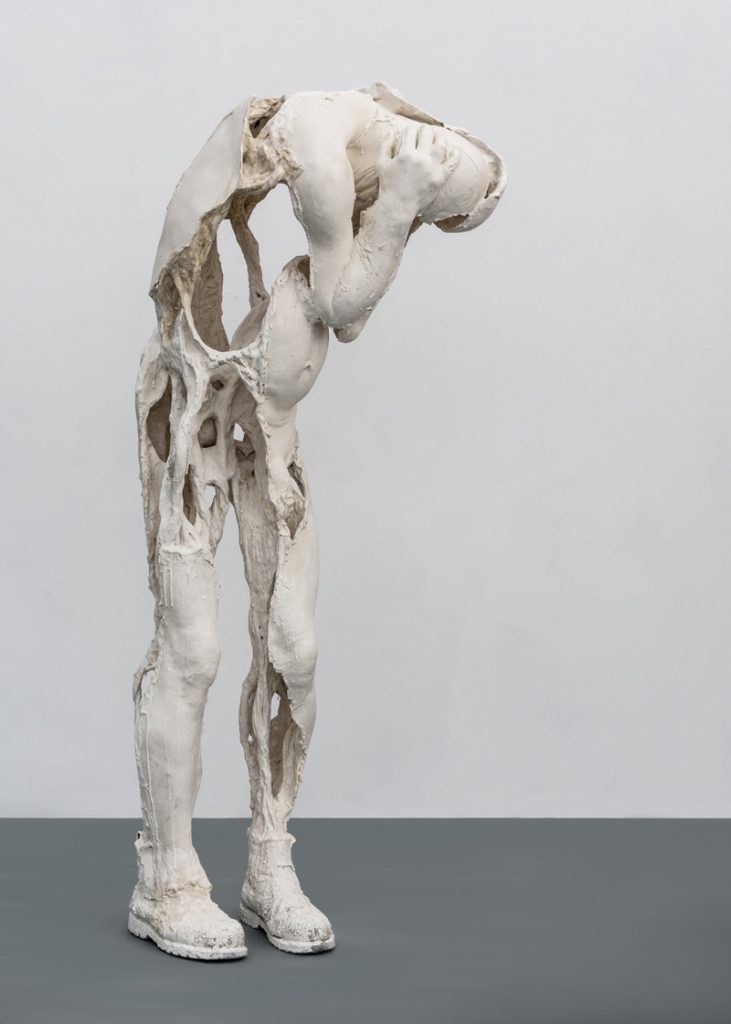
Anna Gillespie, Hear No Evil,
163 x 60 x 44cm,
Plaster, mixed media.
Image: © Colin Hawkins Photography
Our bodies and bodily existence are both potential victims of the climate emergency and yet, ironically, also associated through our lifestyles with the very cause of the problem. But our bodies are not separate from ‘nature’ and contain as much beauty as the other natural forms and processes we see around us. It is through our bodies, the fact that we are one body with other species and the land, that we may, I believe, find enough connection and reverence with and for the Earth to live within our ecological limits.
The beauty of the world around us gives us solace even as we grieve its destruction. Some of my work is simply a way of paying homage to this beauty we are a part of, of attempting to comprehend that we are embedded in the biosphere, the web of life, rather than putting us at the top, alone, of a pyramid of life. My work on this aspect of our relationship with Earth often incorporates found natural materials to call attention to this connection that can be lost when we live in the ‘built’ environment in an increasingly digital culture.
In my work, Give Me Shelter, I hope to portray a sense of futility of trying to shelter ourselves from what is to come. The figure is trying to climb up away from flooding or sea level rise and yet remains vulnerable. An umbrella, an umbrella stand, will not be sufficient. Neither will the sandbags arrayed around the base. In some cultures, the black umbrella is a symbol of protest and this work also questions the effectiveness of that route too. The stress of attempting this act of self-protection is reflected in the fragmentation and vulnerability of the figure itself
My sculpture sequence Witness and Hear No Evil, intended as part of a series of four life-size figures—Hear No Evil, See No Evil, Speak No Evil, Do No Evil—reflect on our desire not to acknowledge the climate crisis. An impossible task but one that we attempt through the pleasurable distractions our consumer culture allows us and through self-concern. The futility of this attempt not to acknowledge reality is reflected in the hollow, fragmented and vulnerable body.
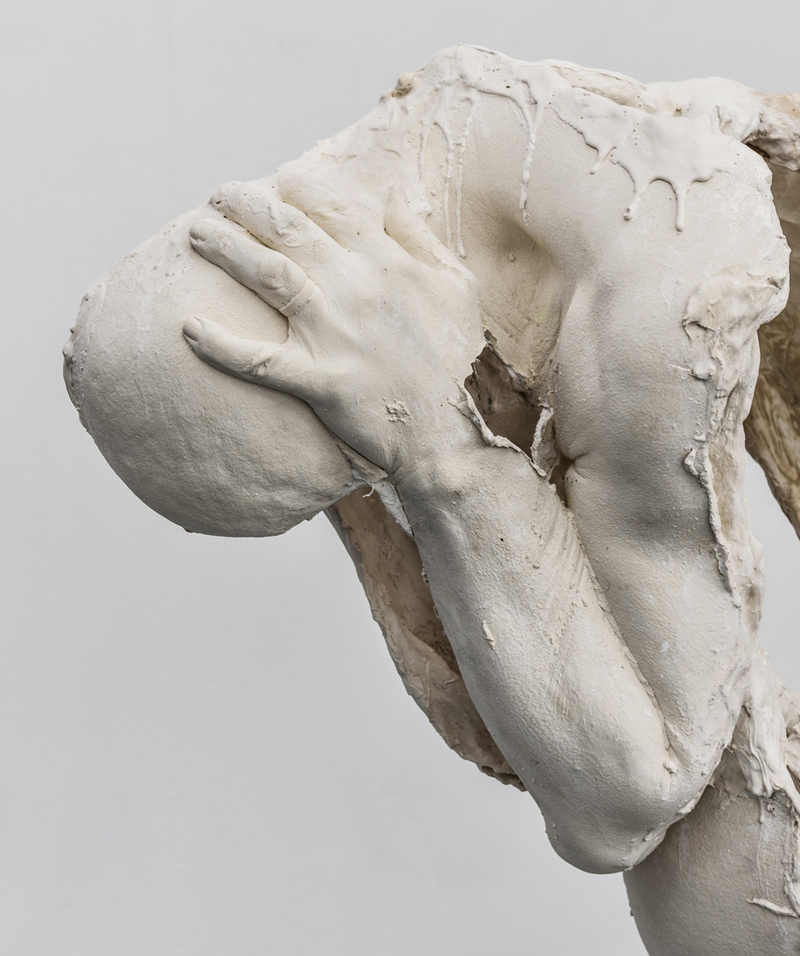
Anna Gillespie, Hear No Evil,
163 x 60 x 44cm,
Plaster, mixed media.
Image: © Colin Hawkins Photography
Post Notes
- Feature image: Anna Gillespie, Give Me Shelter, 285cm, plaster, mixed media,
© Colin Hawkins Photography - Anna Gillespie’s website
- Antony Gormley: Sculpted Space Within and Without
- Sidi Larbi Cherkaoui & Antony Gormley: Sutra
- Paolo Sorrentino: The Great Beauty
- Wassily Kandinsky: Concerning the Spiritual in Art
- Danila Tkachenko: Escape
- Bill Viola & Michelangelo: Life Death Rebirth
- Hannah Peschar Sculpture Garden & Zen Master Ryokan
- The Culturium uses affiliate marketing links via the Amazon Associates Programme
